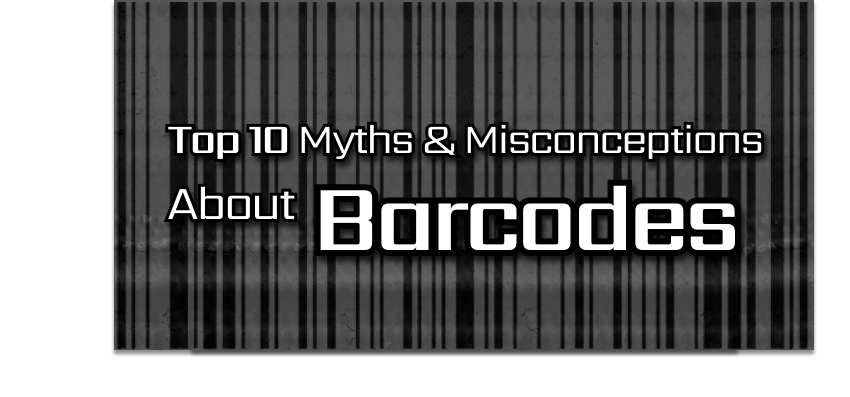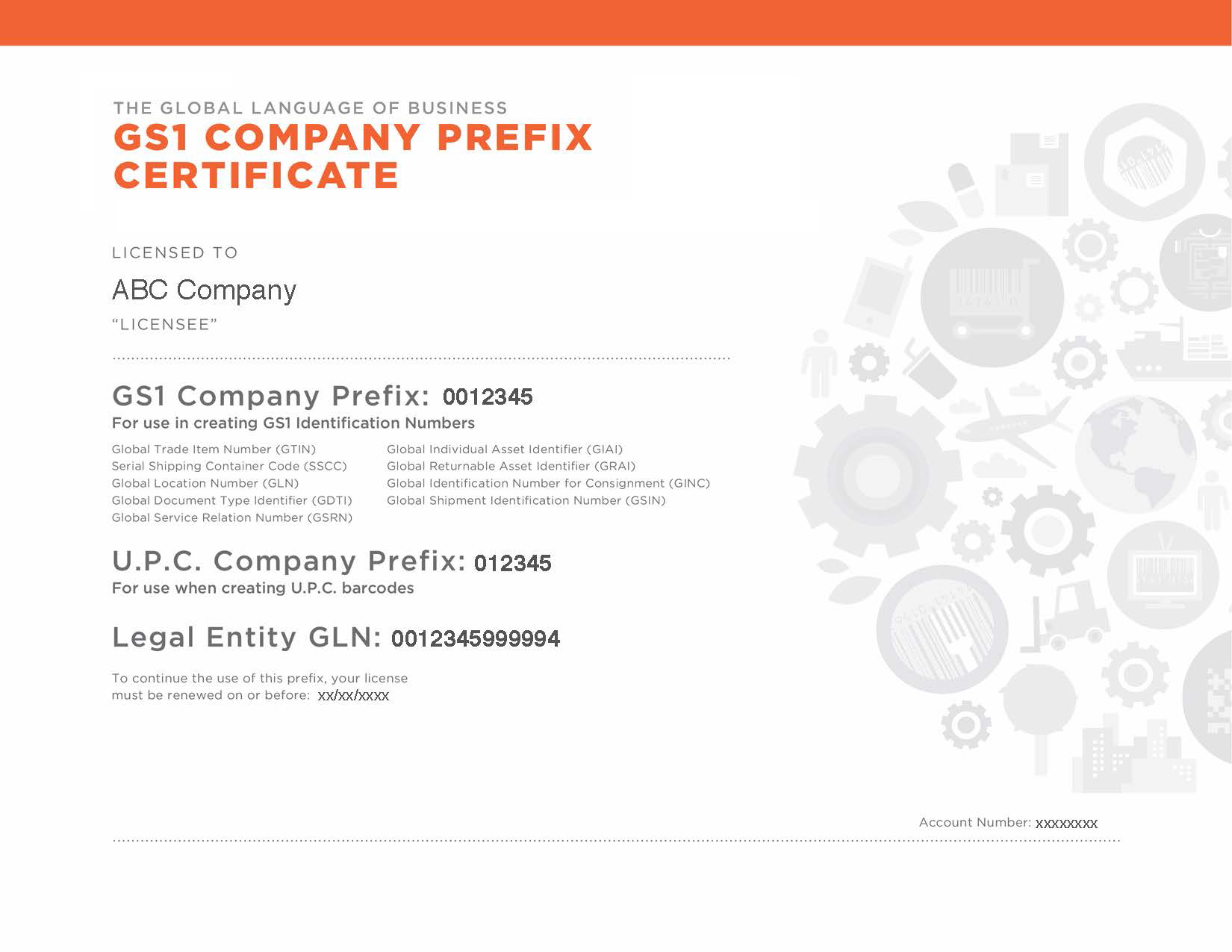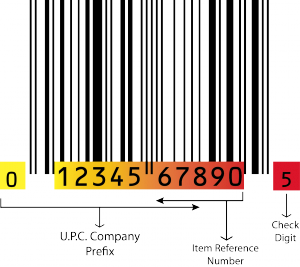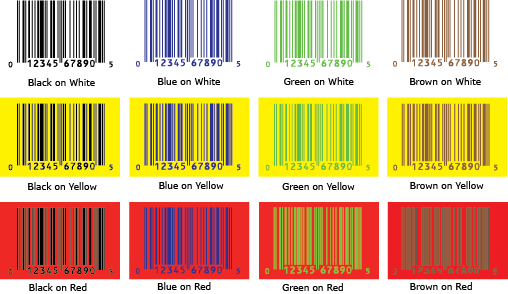
Today, if a corporation wants to sell in stores and/or online, its products will almost certainly require barcodes. Because there is so much conflicting and erroneous information regarding barcodes on the internet, we have compiled a list of some of the most commonly heard myths, so you can discern fiction from fact!
1. A product’s country of origin can be obtained from a barcode.
This is a popular myth, however, UPC barcodes only encode numeric digits that do not correspond to the nation of origin of a product. The barcode contains merely a unique identification for the product, that is used to look up product information in a database.
2. All products sold in the US must have a UPC barcode.
This is a misconception. While UPC barcodes are widely used in the United States, they are not legally necessary. Most retailers and online marketplaces, on the other hand, require suppliers to utilize brand-licensed UPC barcodes. Some small local merchants and online stores do not require suppliers to use barcodes to identify their products.
3. UPC barcodes can only be used for products sold in the US.
This is a total myth. UPC is an abbreviation for “universal product code.” A UPC barcode is, by definition, accepted in both the United States and every other country. The 12-digit UPC has been read by scanners all across the world since its debut.
Companies outside the United States identify their items with 13-digit IDs known as EAN (European Article Number or JAN). (Japan Article Number). Prior to 2005, companies employing EANs or JANs in other countries were required to have their products labelled with UPC barcodes if they were to be sold in the United States. Because many retailers lacked scanners capable of reading 13-digit barcodes, a UPC was required. GS1, today’s global standards organization, was formed by a merging of US and international numbering bodies. One of the first endeavors was to address this issue.
A Sunrise Date of 2005 was established as the starting point for all GS1 barcode numbers (12-13 digits) to be read in retailers across the United States. As a result, UPCs, EANs, and JANs can be read at any retailer, and businesses that use UPCs should never label their items with 13-digit identifiers.
IMPORTANT – As mentioned in other fallacies listed below, several companies advertise online and spread disinformation. These companies, known as resellers, provide deceptive barcode substitutes at low prices. When a reseller states that they give BOTH UPC and EAN barcodes, this is an easy way to determine their legality. Avoid these businesses at all costs!
4. All UPC barcodes advertised online are the same.
This is a dangerous misconception. The bullet points below breaks down three different types of UPCs that can be found through online searches
- Brand Licensed GTINs From Global Standards Agency (GS1). Because consumers and retailers must trust the validity of items and the information linked with them, most retailers REQUIRE that suppliers ONLY obtain GTINs from the standards organization. If current listings are not confirmed against the worldwide company prefix database, Amazon and many other large merchants will deactivate them and prohibit new items from being added to a catalog. It should be noted that the worldwide standards organization just gives the GTIN (identifier), and businesses acquire the real barcode image files and support from Barcode US.
- UPC Reseller Using Older Shared Company Prefix. The majority of inexpensive UPCs are offered by “resellers” who use older firm prefixes. Obtaining UPCs from a reseller is not unlawful; nevertheless, contrary to what their website claims, these cannot be utilized by most stores or Amazon. It is crucial to note that many of these sites say that their UPCs are from GS1, but this just confuses new enterprises who may not be aware that they must license the GTINs in their own name. These UPCs may be acceptable for tiny local businesses and individual websites, but they drastically limit a company’s capacity to expand.
- Discounted UPC Provider Making Up Numbers. Sad to say, but many businesses fall victim to this issue. Companies can’t really verify a reseller’s legality because there isn’t an accrediting body regulating UPC resellers. When duplicate GTIN data compromises a product listing, Amazon routinely deactivates it. We recommend that you carry out your due investigation if your business thinks a “discount” UPC will meet your demands. Making ensuring the website has both a physical location and a phone number is a smart idea. Additionally, confirm the legitimacy of websites by checking state business records the local BBB office.
5. Amazon can accept UPCs from resellers
That is ENTIRELY FALSE. Contrary to what is implied on the websites of inexpensive resellers, Amazon entirely rewrote its specifications to demand vendors to utilize UPCs (GTINs) registered to their unique brand ONLY. There are thousands of videos and websites offering false information on how to either get around Amazon’s rules or lie. Amazon will either reject a new item or, worse yet, delist an existing item if it flags an item with a GTIN that is not properly licensed to a vendor.

6. UPC barcodes can be used to determine the price of a product.
This is untrue. While UPC barcodes are used by shops to manage inventory and sales, the price of a product is typically established by the retailer’s pricing system, which is independent of the barcode. Databases include information about prices and products, and the GTIN is the key that links the item to the database entry.
7. There is a global UPC product database.
This is a myth. As of 2023, there is not a single master global UPC database. Despite what many search results display, such as “UPCdatabase, UPCitemdb, UPClookup”, there is NOT a database that actually contains authorized and validated UPC product data. To learn more, please visit, Whose Controlling Your Online UPC Product Content.
8. Scanning a barcode on a mobile phone provides accurate information.
This is untrue. as opposed to a QR code, which typically includes a real web address controlled by the brand owner. The creators of the applications frequently use unofficial or crowd-sourced databases (see above).
9. A Certificate of Ownership is the same as a Company Prefix Certificate

This is a myth. A GS1 Certificate identifies the relationship to the company/brand when a business licenses a UPC Company Prefix or a Single GS1 GTIN. Numerous merchants and marketplaces, including JCPenney, Home Depot, Amazon, Kroger, etc., demand that vendors present a legitimate certificate to prove trademark ownership. By offering a “Certificate of Ownership” or “Certificate of Authenticity,” some resellers deceive customers. Since no authority can vouch for the legitimacy of these documents, they are worthless to any trading partner. Purchaser Beware!
10. Manufacturers and retailers can validate GTIN ownership online.
This is accurate, but there is a catch. The worldwide standards organization does run a free online resource called GEPIR, which anybody can use to confirm the licensee of a certain GTIN, at https://gepir.gs1.org/index.php/search-by-gtin. (UPC). Please be aware that GEPIR, a database built by one of the cheap resellers, is neither authorized nor comprehensive. Unfortunately, a lot of businesses fall for this deceptive strategy, and they finally need to get the right GTINs after the fact.
Companies that subscribe to GS1 Barcode Support programs automatically get access to GTIN.cloud. This portal is where most companies who obtain GS1 GTINs manage their assignments, create barcodes and control their UPC product data. All GTINs managed on the GTIN.cloud portal can be viewed by the lookup function, AND the associated valid GS1 Company Prefix Certificate is displayed.
EXTRA: Barcodes can be printed in any color.
This is a common misconception. Ideally, barcodes are printed on black over a white background. However, other acceptable color combinations may be used. To learn more about color options, please visit, www.barcode.graphics/upc-color-guide/
Companies who are new to UPC barcodes should visit www.barcode-us.com. If you require any assistance with barcoding, please feel free to



